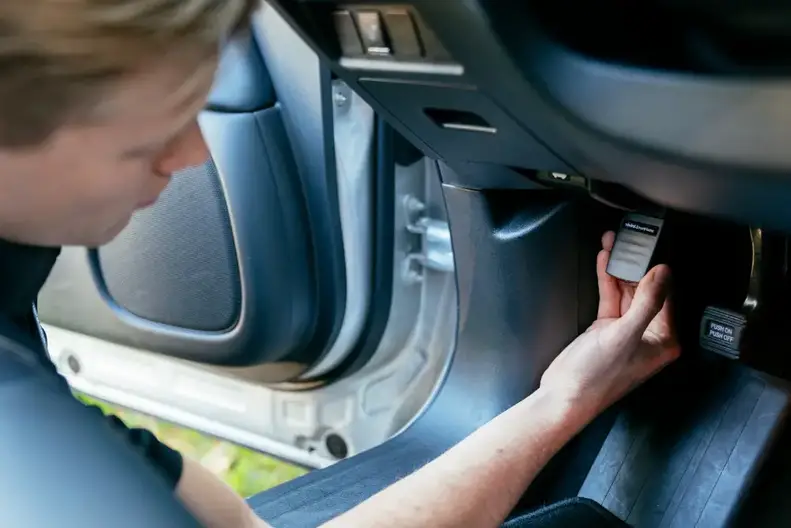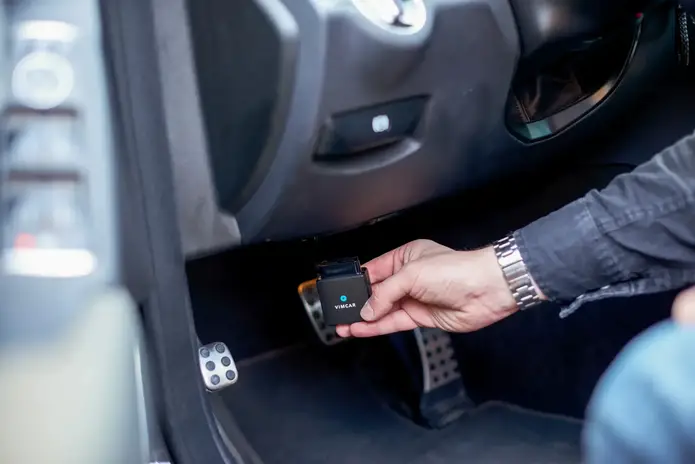Do you suspect someone might have placed a tracking device on your car? It’s not something that many of us think about, but it is possible. Knowing how to scan your car for tracking device is an important skill and can help you keep yourself and your property safe. This article shares simple steps and methods that will help you give your car a thorough scan for any suspicious devices.

How to Scan your Car for Tracking Device | Steps Explained
If you feel like your privacy is being invaded, there are ways to scan your car for a tracking device. Some of the steps included are:
How to know what you are looking for
Scanning your car for a tracking device may sound like something from a spy movie, but it is an important preventative measure to protect yourself from theft and malicious surveillance. Knowing what you are looking for is the key to scanning your car effectively.
It is not always easy to recognize the appearance of a tracking device. They come in all shapes and sizes, from small GPS chips to wired boxes. The most common types of trackers are magnetic or battery-powered devices that can be hidden underneath your car’s chassis. To detect them, you must inspect underneath the vehicle and along the wheel wells for anything that looks out of place or unfamiliar.

A good flashlight is essential for scanning dark and hard-to-reach spaces in your vehicle. You should also purchase a telescopic mirror to look under the dashboard without crouching awkwardly. An electronic sweeper can detect more sophisticated tracking devices that may have been installed in remote locations inside your car.
Perform the physical inspection
You only need a few tools and patience to perform a physical inspection. It’s best to start with the car’s interior and look for anything that appears out of place or strange. You should also check under seats, in compartments, within the dashboard, and on door panels. Then move to the exterior of the car. Inspect around windows and door frames, as this is where trackers are most often placed. Don’t forget to check underneath the car too! If any suspicious items are wired to your vehicle, they may be connected to a tracking device, so make sure to take photographs of them in case you need evidence later.

Use the electronic sweeper
One potential threat is a tracking device placed on your car without your knowledge. It would be best to use an electronic sweeper to scan your car for tracking devices to protect yourself from this.
Using an electronic sweeper is easy and thorough. All you need to do is plug it in and pass it around the outside of your vehicle, looking for any odd signals or sounds that may indicate a tracking device has been planted on your vehicle. As long as the sweeper detects no suspicious signals or sounds, you can be assured that no one has placed a tracker on your car without your knowledge.
Get professional assistance
Hiring a professional service to scan and detect any hidden tracking device in your car will give you peace of mind and save you time and money. Professional services are experienced and knowledgeable about the latest technology criminals use to track vehicles. They know exactly where to look and what equipment is needed to perform a thorough scan and detection process on your vehicle. They also provide detailed reports so that you can take the necessary steps should any suspicious activity be discovered by them.

Remove the tracking device.
You must scan your vehicle for suspicious components to remove the tracking device. Start by looking under the hood of your car and checking around the battery and fuse boxes. Also, check around antenna connectors, indicating that a GPS tracker has been installed in your vehicle.
Suppose you don’t have time or don’t feel comfortable checking under the hood of your car. In that case, you can hire a local mechanic or security expert who can help detect any potential trackers or other surveillance items that may have been placed on your vehicle.
How to Scan your Car for Tracking Device | methods explained
Getting your car tracked by someone with bad intentions is a real threat many drivers face. But don’t worry; there are methods you can use to detect hidden tracking devices before they can wreak havoc on your life. Here’s how to scan your car for a tracking device:
Use a Detector App
Using a detector app is quick and easy. For this, you’ll need an Android or iOS smartphone with Bluetooth capabilities, and then download a compatible detector app from the App Store or Google Play Store of choice. The application will analyze suspicious signals near your vehicle and alert you if it detects something unusual. You can also use this technology to block other signals that may interfere with your vehicle’s performance, such as those emitted by nearby Wi-Fi networks.
Listen for Bizarre Noises
Pay attention to any strange noises or buzzing sounds – these could indicate that someone is tracking your vehicle. It would help if you also tried turning off the radio and any other electronic devices in the car so that you’re able to hear more clearly. Other than that, it’s useful to have an assistant sit inside the car while you move outside; this way, you’ll be able to focus more on any potential noises inside the cabin.

Some other Reads: Why Does My Car’s Air Conditioning Smell Bad – Best Eliminating Tips
Locate the ODB Port
Finding the ODB port can be tricky because its location varies by the make and model of the vehicle. Some newer models will have a connector in plain sight, while others may require some disassembly or further investigation. To determine exactly where yours is located, consult your owner’s manual or contact your local dealership or auto repair shop.
The ODB (On-Board Diagnostics) port is used for various diagnostic functions and is typically found under the dashboard of a car or truck. Knowing its location will allow you to access information and look for any devices installed without your knowledge.
Conclusion:
Knowing “How to Scan your Car for Tracking devices” is an important step in ensuring the safety and privacy of your vehicle. Completing the task with the right steps and methods takes only a few minutes. By regularly scanning your car, you can keep tabs on any suspicious activity before it becomes a significant issue. Please don’t wait until it’s too late; take control by scanning your car today! It’s an easy and powerful way to protect yourself and your property from unwanted surveillance or other activities.
FAQs:
What should I do if I find a tracking device on my car?
If you find a tracking device on your car, you should first call the police. It’s important to report any suspicious activity or items that could be related to a crime. The police can investigate and determine if the device is used for criminal purposes.
What are the benefits of using a tracking device scanner?
● It can help to reduce losses due to theft or misplacement of items.
● A tracking device scanner can help you keep track of your inventory more efficiently.
● A tracking device scanner helps to improve customer service by providing accurate information about products in real-time.
What types of tracking devices are available?
Some of the tracking devices are:
● GPS tracker: It uses satellite technology to track an object’s or person’s location in real time.
● Radiofrequency identification (RFID) tag: These tags contain a small chip that emits a signal when an RFID reader scans.
● Bluetooth tracking devices use short-range wireless technology to connect with smartphones or other compatible devices.

